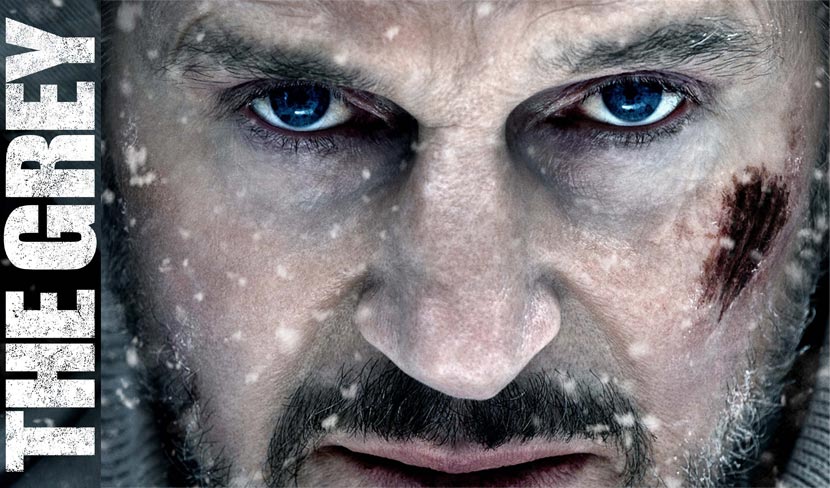‘The Grey,’ not what was expected

I went to see “The Grey” this weekend. You’ve all seen the ads. For those that haven’t, I’ll recap what the previews showed us: Liam Neeson is his character from “Taken,” and instead of indiscriminately killing human traffickers for his daughter, he is indiscriminately killing wolves for … well, the previews didn’t make that clear.
They did, however, it make clear that he would be killing lots of wolves and the ways in which he did so were going to be entertaining. It’d be a good movie to take the buddies to.
So with that in mind, that’s what I did: I took my friends to see the film.
We went in expecting to see Liam Neeson kill all kinds of wolves with broken bottles, guns, knives and some type of explosive thing on a stick, while possibly searching for some member of his family.
We expected some type of Hollywood storyline about why these Alaskan wolves kidnapped his loved one and why they deserved Hollywood justice done to them.
We got none of this.
Instead, we got approximately 117 minutes of soul searching, tight pacing, good acting, great cinematography and a gut-wrenching and ruthless internal storyline for Neeson.
And, of course, we all hated it.
This is not to denigrate it as a bad movie, far from it; I’m actually going to put forward my recommendation to go see this movie if you want to see director Joe Carnahan’s best movie since “Narc.”
I’m actually quite glad he’s back to directing in his style after the too-hip-for-school “Smokin’ Aces,” which sucked, and “The A-Team,” which was average in almost all ways.
In “They Grey,” as in “Narc,” Carnahan got fantastic performances from virtually all the cast and supplemented his new film about as well with great writing.
This review, however, is more of a warning to all would-be filmgoers of this campus: do not be fooled by the advertisements. The wolves, as you find out early in the movie, are as much victims of the circumstance as Neeson and his band are.
There is very little fighting and even less action, and the way the violence is emphasized is brutal and unforgiving, a far cry from the glamorization that I was expecting and, frankly, wanting in a good-times weekend affair with my buddies.
This begs the question: would the movie have been as successful at the box office if it had been marketed as an intense portrait of the human condition?
I would wager that it wouldn’t be, so Carnahan, Ridley Scott and the other producers are sort of justified in spinning it as something that it isn’t.
As Quentin Tarantino’s “Inglourious Basterds” proved, there is value in tricking your audience into seeing something that might educate or inform them. In his film, Tarantino lures the audience in with premise and reputation and then delivers an extremely harsh critique of his audience for wanting to see a movie in which Hitler is killed by a band of Jewish men being both heroic and despicable at the same time.
Tarantino wrote the movie knowing that the audience would be expecting the glamorous violence of his earlier work, and instead he had the “heroes” do the normal bad-guy stuff in the movie: torture, kill prisoners of war, maim the enemy, backstab, etc. (On a side note, I would recommend that movie for another viewing by the reader.)
In “The Grey,” Carnahan does a similar trick, although not with the same message. He merely tricked me and my friends into seeing, well, a wholly well-made and engaging movie. I wouldn’t have minded it if I went to see it myself, but seeing it with five other people just sort of led us to a collective ennui.
There was no high-fiving; we went our separate ways.
Should you go to see it, don’t make the same mistake I did. See it alone, and see it with open eyes.
3.5 out of 4 stars.

